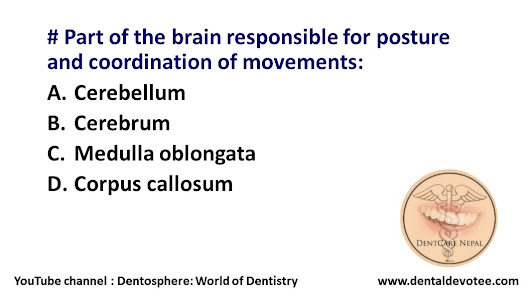# Part of the brain responsible for posture and coordination of movements:
A. Cerebellum
B. Cerebrum
C. Medulla oblongata
D. Corpus callosum
The correct answer is A. Cerebellum.
The cerebellum lies dorsal to the pons and medulla and consists of two lateral hemispheres: the cerebellar hemispheres and a median worm-like part called vermis. It is connected to the midbrain, pons, and medulla by superior, middle, and inferior cerebellar peduncles, respectively. The surface of cerebellum has narrow transverse ridges called folia (leaf-like in sections) separated by deep fissures.
Functionally, the cerebellum is mainly concerned with the involuntary control of somatic motor activities, essential for the maintenance of equilibrium, muscle tone, and posture.







